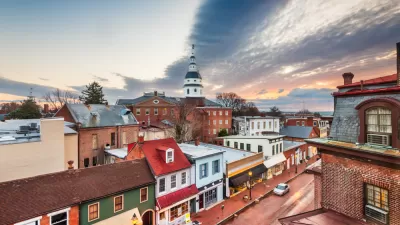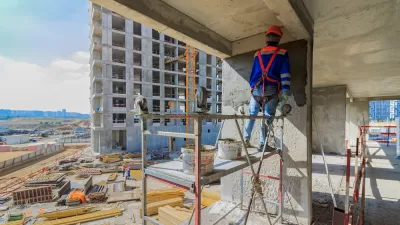Smart policies can ensure that low- and moderate-income households can find suitable housing in good neighborhoods where transportation costs are low. The research is clear: upzoning works.

"If we want to increase the supply of affordable housing, it's important to understand that it's not just about housing. Too often, efforts to increase affordability ignore transportation costs, resulting in cheap housing in isolated areas with high vehicle expenses. When all costs are considered, it's clear that the best way to increase affordability and economic opportunity is “upzoning” — allowing more housing in a given area — in accessible, high-opportunity neighborhoods."
"In the past, affordability was defined as households being able to spend less than 30 percent of their budget on housing, but many experts now define it as spending less than 45 percent on housing and transportation combined. That definition recognizes that a cheap house is not truly affordable if it’s located in an isolated area with high transportation costs, and that households can rationally spend more for housing in a walkable, mixed-use neighborhood where transportation is cheaper."
"This has important policy implications beyond simply increasing the supply of homes that people can afford. Smart-growth policies that increase affordable infill — more housing in existing residential areas — also can help achieve many economic, social and environmental goals. We know that children tend to be happier, healthier and more successful if they grow up in high-opportunity neighborhoods: areas with mixed incomes, good schools and convenient access to services and jobs."
FULL STORY: A Recipe for Achieving Real Housing Affordability

Alabama: Trump Terminates Settlements for Black Communities Harmed By Raw Sewage
Trump deemed the landmark civil rights agreement “illegal DEI and environmental justice policy.”

Planetizen Federal Action Tracker
A weekly monitor of how Trump’s orders and actions are impacting planners and planning in America.

The 120 Year Old Tiny Home Villages That Sheltered San Francisco’s Earthquake Refugees
More than a century ago, San Francisco mobilized to house thousands of residents displaced by the 1906 earthquake. Could their strategy offer a model for the present?

In Both Crashes and Crime, Public Transportation is Far Safer than Driving
Contrary to popular assumptions, public transportation has far lower crash and crime rates than automobile travel. For safer communities, improve and encourage transit travel.

Report: Zoning Reforms Should Complement Nashville’s Ambitious Transit Plan
Without reform, restrictive zoning codes will limit the impact of the city’s planned transit expansion and could exclude some of the residents who depend on transit the most.

Judge Orders Release of Frozen IRA, IIJA Funding
The decision is a victory for environmental groups who charged that freezing funds for critical infrastructure and disaster response programs caused “real and irreparable harm” to communities.
Urban Design for Planners 1: Software Tools
This six-course series explores essential urban design concepts using open source software and equips planners with the tools they need to participate fully in the urban design process.
Planning for Universal Design
Learn the tools for implementing Universal Design in planning regulations.
Clanton & Associates, Inc.
Jessamine County Fiscal Court
Institute for Housing and Urban Development Studies (IHS)
City of Grandview
Harvard GSD Executive Education
Toledo-Lucas County Plan Commissions
Salt Lake City
NYU Wagner Graduate School of Public Service





























